Colin McRae was a devil or otherwise he drove like him. He made a mockery of fate a thousand times, driving fast where he simply couldn't. A life in a bend, like others like him. Maybe more. He walked the tightrope. It is therefore not surprising that he died in an accident, it was perhaps what intrigued him, what he wanted to explore. In his curves there were life and death. Because you don't win against fate, not even McRae.

The Scotsman raced on anything that had an engine. A winner since the age of seventeen, he was simply the greatest, an hero. The unexpected was not that he died a violent death but that he remained alive up to 39 years. Seeing him driving makes you feel very small because he was making unknown maneuvers, literally unthinkable, staying incredibly on the road. Every turn lasted forever because it was a long, crazy stunt without a net. With the car that seemed to disintegrate due to vibrations and noises, each time different but always horribly scratchy. And he didn't seem to care at all, coldly focused on the next movement. On all routes, in all weather conditions, with all types of light. A supernatural car and nerve control. And an unparalleled luck that had magically protected him from himself. Until the surrender.
Colin like Gilles, two angels of risk, that they sought at any time of the day. A continuous bet that made them myths, bringing them to the drivers' Olympus. Because drive like them on Earth, no, you just can't.
“At the end of the day, I got involved in all this because I enjoy driving cars and driving them as fast as possible. If I was going to be remembered for anything I would like it to be for that.”
“Straight roads are for fast cars, turns are for fast drivers.”
“You're here for a good time, not a long time.”Colin McRae

Colin McRae was one of the most idolized rally drivers in history. His driving style was a phenomenon that hooked thousands of fans, not only in UK but in all around the world.

He contributed to making a niche specialty famous. He wrote the most beautiful and intense pages of the world rally of the 90s and the beginning of the third millennium, enriching them with myth and legend.
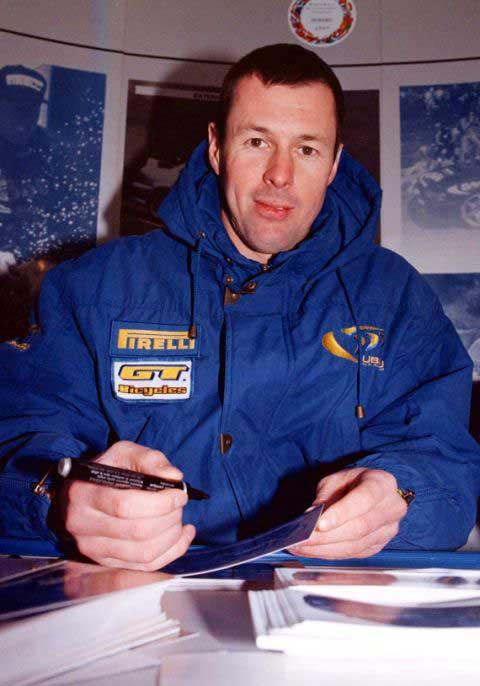
Colin McRae.
A spectacular, flamboyant and totally committed driving style brought him to the attention of Motorsport enthusiasts at an early age.

The tragic helicopter accident which claimed the life of Colin shocked both the general public and the motorsport community, at home and abroad.
Colin McRae blamed for fatal helicopter crash. 6 September 2011
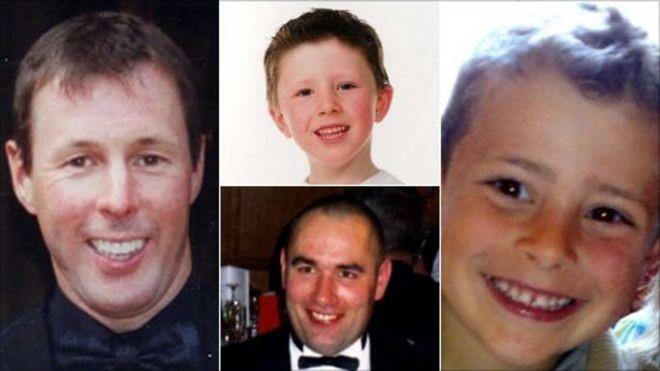
Image caption Clockwise from left, Mr McRae, his son Johnny, Ben Porcelli and Graeme Duncan died in the crash.
Rally car champion Colin McRae has been blamed for causing the helicopter crash in which he and three other people died.

Mr McRae, 39, his five-year-old son Johnny, the boy's six-year-old friend Ben Porcelli and Graeme Duncan, 37, all died when the aircraft came down near the McRae family home in Lanark as they flew home from a trip to see a friend.
The inquiry had heard from Karen and Mark Porcelli, the parents of Ben, who said they did not give Mr McRae permission to take their son in the helicopter.
Sheriff Nikola Stewart, who heard the inquiry over 16 days at Lanark Sheriff Court, concluded in her written determination: "it would have been a reasonable precaution to refrain from flying helicopter G-CBHL into Mouse Valley wherein the pilot engaged in low-level flying when it was unnecessary and unsafe for him to do so and whilst carrying passengers on board. The deaths and the accident resulting in the deaths might have been avoided had Mr McRae not flown his helicopter into the Mouse Valley. Such a precaution would have been entirely reasonable. There was no necessity to enter the Mouse Valley. There were no operational or logistical reasons to enter the Mouse Valley.

Mr McRae chose to fly the helicopter into the valley. For a private pilot such as Mr McRae, lacking the necessary training, experience or requirement to do so, embarking upon such demanding, low-level flying in such difficult terrain, was imprudent, unreasonable and contrary to the principles of good airmanship."
The ruling states that the accident happened when, due to an "unknown occurrence", the aircraft deviated from its intended flight path and crashed into trees lining the side of Mouse Valley.
The aircraft was in powered flight at the time of the crash and Mr McRae had attempted to recover from that unknown incident.
These attempts, the sheriff said, were unsuccessful because of the position and speed of the helicopter within Mouse Valley and the ensuing restrictions on opportunities to land the helicopter or fly it to safety.
Such options would have been available to him had he "adhered to rules of good airmanship and desisted from flying in the valley at low height and high speed", she said.
As part of the hearing, the sheriff and lawyers involved in the case visited the woods where the Eurocopter Squirrel aircraft crashed.
One of the crash victims, Mr Duncan, filmed much of the outbound and return flights on his personal camcorder and some of the footage was recovered and included in the inquiry hearings.
Sheriff Stewart said the footage indicated that the helicopter was being flown "at unnecessarily low heights. He (Mr McRae) undertook significant manoeuvring at low level and the helicopter seems to have encountered significant g-loading as a result, to the evident enjoyment of his passengers. The episodes of extremely low-level flying and the excessive manoeuvre parameters, particularly the descent into the valley by Larkhall, all as captured on the video recording, are indicative of an aircraft being flown imprudently, without due regard to the principles of good airmanship and in such a way that normal safety margins would be reduced. He was, accordingly, in breach of article 26 of the Air Navigation Order 2005 when he flew his helicopter on September 15 2007 and should not have flown that machine at that time."
To fly an aircraft in the UK, it is necessary to hold a pilot's licence, a valid medical certificate and to have the licence validated with the type of aircraft to be flown.
Sheriff Stewart found that Mr McRae did not hold a valid flying licence or a valid "rating" for the Eurocopter Squirrel helicopter.
-
The FAI took place at Lanark Sheriff Court.
-
Evidence was heard over 12 days between 12 January and 26 May, 2011.
-
An inspection of the site took place and points along the flight path were visited on January, 2011.
-
Final submissions heard on 8 August, 2011.
-
Fatal Accident Inquiry conclusions were published on 6 September.
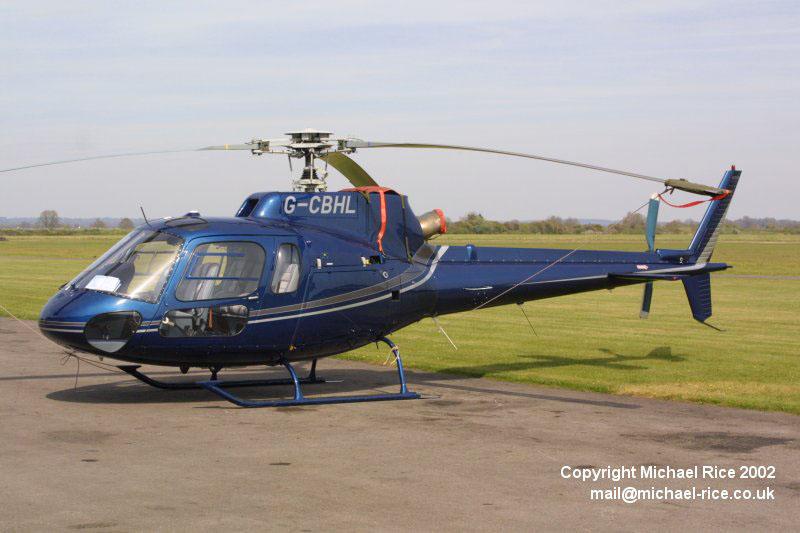
The sheriff's findings go further than an Air Accidents Investigation Branch (AAIB) report, published in February 2009, which found no cause could be positively determined into the tragedy.
His father, Jimmy McRae, said: "we still believe we will never know what caused the crash but we were never in any doubt as to Colin's prowess as a fine pilot. Everybody knows from Colin's rallying career that safety is always an issue and that his reactions and eye and hand co-ordination were world-class."
He added his family had wanted the inquiry to recommend that private aircraft should be fitted with a flight data recorder: "had a flight recorder been fitted to the aircraft, it may have been possible to determine what occurred in the final seconds of the flight and what actually caused the helicopter to crash. This would prevent uncertainty as to the cause of the crash and allow lessons to be learned from tragic accidents such as this."
Mr McRae concluded he hoped the family would be able to "move forward" following the findings.
The McRae family's solicitor, Peter Watson, added: "although Colin's licence was out-of-date, this played no contributory factor whatsoever to the accident."
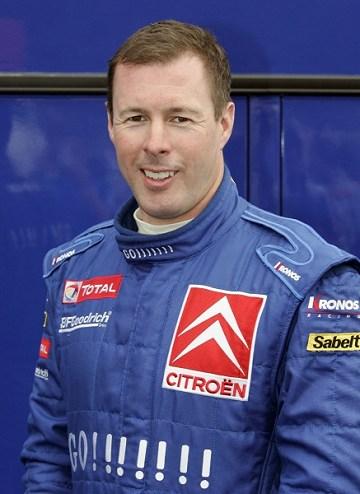
Colin Steele McRae, 5 August 1968 – 15 September 2007, was a rally driver from Lanark, Scotland. The son of five-time British Rally Champion Jimmy McRae and brother of rally driver Alister McRae, Colin McRae was the 1991 and 1992 British Rally Champion and in 1995 became the first Scottish person and the youngest to win the World Rally ChampionshipDrivers' title, a record he still holds. With 25 victories in the WRC, McRae previously held the record for the most wins in the series.
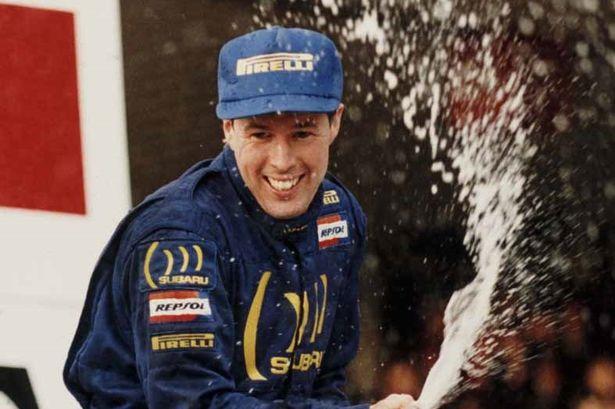
McRae's outstanding performance with the Subaru World Rally Team enabled the team to win the World Rally Championship Constructors' title three times in succession in 1995, 1996 and 1997. After a four-year spell with the Ford Motor Co. team, which saw McRae win nine events, he moved to Citroën World Rally Team in 2003 where, despite not winning an event, he helped them win the first of their three consecutive manufacturers' titles. He was appointed a Member of the Order of the British Empire for services to motorsport in 1996.
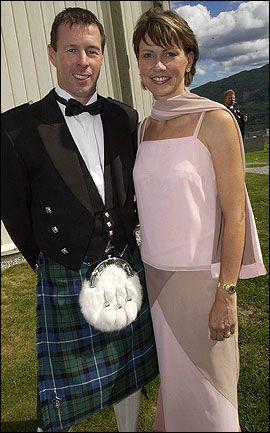
McRae was married to Alison and had two children, Hollie and Johnny. He moved to the principality of Monaco in 1995, partly through his friendship with David Coulthard. However, as his young family grew up, he spent more time back at his home in Lanarkshire — accepting the higher tax liability of living in Scotland. The couple bought the 17th century Jerviswood House. Colin's uncle Hugh "Shug" Steele was also a former rally driver.
Colin began his competitive career in motorsport riding trial bikes at an early age, despite being more interested in four wheeled machines rather than two wheel bikes.

His exciting driving style drew many comparisons to Finnish ex-World Rally Champion Ari Vatanen, whom McRae had always idolised.
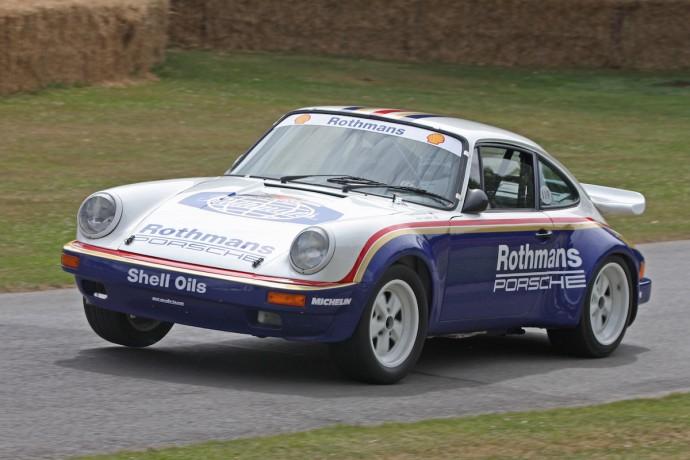
In 2002, to win back the World Rally, the Scot was ready to cut off his finger. He injured his left hand in Corsica and was no longer able to drive at the top. Over the weekend he will have raced in Catalonia with a protection, but the Ford chief revealed: "Colin told me that if he does not improve, he will have a phalanx cut off."
McRae rejoined Prodrive for the 2004 24 Hours of Le Mans, where he took third place in the GTS class and ninth position overall in a Ferrari 550-GTS Maranello partnering Darren Turner and Rickard Rydell. Fellow countryman and Le Mans winner Allan McNish commented that "Colin has adapted far better than people expected" to endurance sportscar racing.
In August 2007, McRae claimed to still be working on finding a seat for the 2008 WRC season, stating that "if it doesn't happen next year, then I won't (return) because you can only be out of something at that level for so long." In 2017, talking to Autosport podcast, David Richards confirmed that he and McRae had talked about McRae's comeback to Subaru for season 2008. Robert Reid was contacted by McRae who asked him to be his co-driver and the pair was due to test together, but unfortunately the test never happened because of McRae's fatal helicopter accident.
The funeral for Colin and Johnny took place on 26 September at Daldowie Crematorium near Glasgow, conducted by the Rev Tom Houston, who had married the McRaes and the Rev Steven Reid, chaplain at Johnny's school. An address was given by Robbie Head, a former rally driver and commentator who was a close friend of McRae's, with the Rev Houston giving the benediction. McRae's niece and nephews performed the tune Highland Cathedral, a popular funeral song. The song "(Sittin' on) the dock of the bay" by Otis Redding, a favourite song of McRae's, was played when the family entered the chapel (coincidentally, Redding himself also died in an air crash). The Proclaimers' song "I'm on my way" was played when they left. Colin and Johnny McRae were cremated in the same coffin. Among the attendees at the funeral were fellow Scottish racing drivers Jackie Stewart and Dario Franchitti.
A "Celebration of life" service took place at St Nicholas Church in Lanark on Sunday 30 September at 4 pm. Images from McRae's career and personal life were displayed on large video screens outside the church. Around 700 mourners filled the church, with crowds of up to 15,000 outside. Shortly before 4 pm, Martin Hewins, McRae's personal bagpiper for many years, played "Flower of Scotland" as the family arrived at the church. The service was conducted by the Rev Alison Meikle, who said: "two weeks ago Lanark was struck by silence. A terrible silence bought at an enormous price. However, in our tears love is stronger than death." Later, the Kenny Rogers and Dolly Parton song "Islands in the stream", a favourite of Johnny's, was played. Friends of the pair shared poems and anecdotes from the McRaes' lives. After the service, Colin McRae's widow, brother and father bowed and applauded the crowds who had gathered outside to pay tribute to the McRaes.
In 2015, 20 years from when McRae clinched the 1995 WRC Championship, an exhibition of memorabilia, including cars, racing gears and pace notes, was displayed at a service park at 2015 Rally GB.
McRae's death was met by much grief from former colleagues, rivals and fans alike. The announcement of his death took place during qualifying for the 2007 Belgian GP with ITV commentator James Allen informing viewers of his death. Former F1 driver David Coulthard, who was due to represent Scotland along with him in the Race of Champions at Wembley Stadium on 16 December, described him as "an understated yet fantastically talented individual". During the finale of the 2007 Scottish Rally Championship, the "Colin McRae Forest Stages" held in Perth in September 2007, there was no number-1 car, as McRae had been due to drive the course car on the event. Instead, his car was parked at the starting point of the rally, where fans were able to sign a book of condolences.
Following his win at the Brands Hatch meeting of the 2007 World Touring Car Championship season, Andy Priaulx dedicated it to McRae, commenting that his death "shows how fragile life can be". McRae's former rival, four-time World Rally Champion Tommi Mäkinen, commented the helicopter accident as terrifying news and described McRae as "a pleasant fellow and a tough rival".Valentino Rossi, who was taught the basics of driving a rally car by McRae, said he was shocked and saddened by the sudden departure of the former World Rally Champion. Valentino dedicated his win at Estoril Moto GP in 2007 to him, saying to the media: "I want to dedicate this to Colin McRae. He was one of my big idols when I was very young and it's because of him I have a big passion for rally".
As a mark of respect for McRae, the Swedish Rally organisers set up an award for the longest jump over a crest on the Vargåsen stage of the rally.
On 27 September 2008, the Colin McRae Forest Stages Rally took place in Perth, Scotland. An enhanced entry list of several former big-name rally drivers took part in memory of Colin. The impressive entry list included ex-World Championship drivers Hannu Mikkola, Ari Vatanen (partnered by his 1981 WRC winning co-driver David Richards), Björn Waldegård, Stig Blomqvist, Malcolm Wilson, Russell Brookes, Jimmy McRae, Andrew Cowan and Louise Aitken-Walker, many competing in their original cars. A handful of current WRC drivers also took part including Matthew Wilson, Kris Meeke and Travis Pastrana. The event was deemed a great success, attracting record spectator numbers to the Perthshire forests.
A number of video games have been dedicated to the Scot.
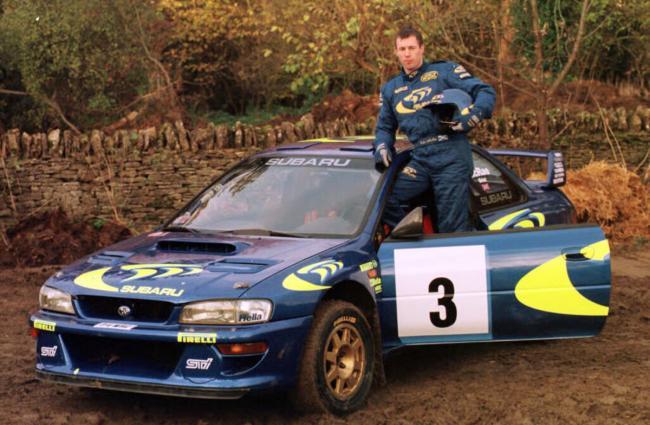
On October 19, 2018, the Padua Motor Show, dedicated to historic cars, could not miss the jewels of ACI Storico, among which some of the protagonists of the Rally of Italy, from Sanremo and Sestriere to the Rally of Sardinia. The cars on display included the 1928 Fiat 520, the 1972 HF 1600 Marlboro, the Audi 4, the Lancia Delta S4 alongside the latest Ford Escorts Cosworth (1993), the 2000 Peugeot 206 Wrc and the Hyundai i20. There were many drivers to meet also: Amilcare Ballestrieri, Sandro Munari, Jean-Claude Andruet, Toni Fassina, Ari Vatanen, Walter Röhrl, Markku Alen, Miki Biasion, Franco Cunico, Didier Auriol, Piero Liatti and Gilles Panizzi.
"The journey into the excellence of the Italian Rally began in 1970, when Sanremo and Sestriere gave birth to the first edition of the national Rally, it's been told by ACI Storico. The race took place on a mixed surface, asphalt and dirt road, until 1997, when the route was modified and made entirely of asphalt.
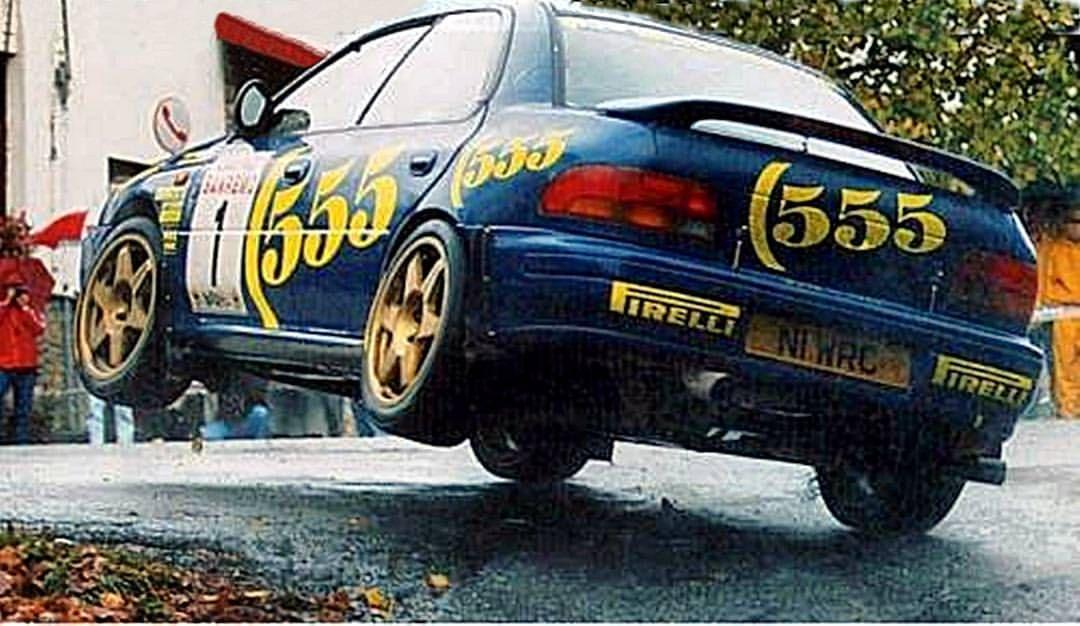
It was here, on the Ligurian, Tuscan, Umbrian and Piedmontese roads that the great ones challenged each other: Miki Biasion, Henri Toivonen, Tommi Mäkinen and Colin McRae. The 80s saw the arrival of the "monstrous" Group B, an experimental category with few limitations, banned in 86 after serious accidents. Ten years later, the dirt road - asphalt era ended. The watershed date of this trip was 2003, when Sanremo said goodbye to the World Championship and we moved from asphalt to the dirt road with arid and sandy bottom of the Sardinian island, which after 15 years was confirmed as an extraordinary appointment in the World Rally Championship”.
Three generations of Colin McRae’s family to join Knockhill event marking 25th anniversary of world rally title. By Graham Brown. December 30, 2019.
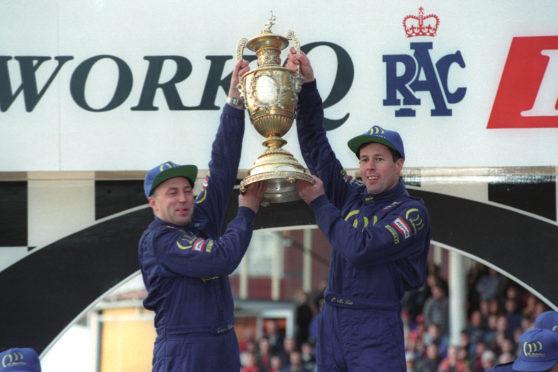
Colin McRae and co-driver Derek Ringer celebrate their world title in 1995. © PA.
Three generations of the family motorsport dynasty are set to grace a Knockhill event celebrating the 25th anniversary of superstar Scot Colin McRae’s World Rally Championship title triumph.
In October, the Fife circuit will host British rallying’s biggest celebration of the Lanark ace.
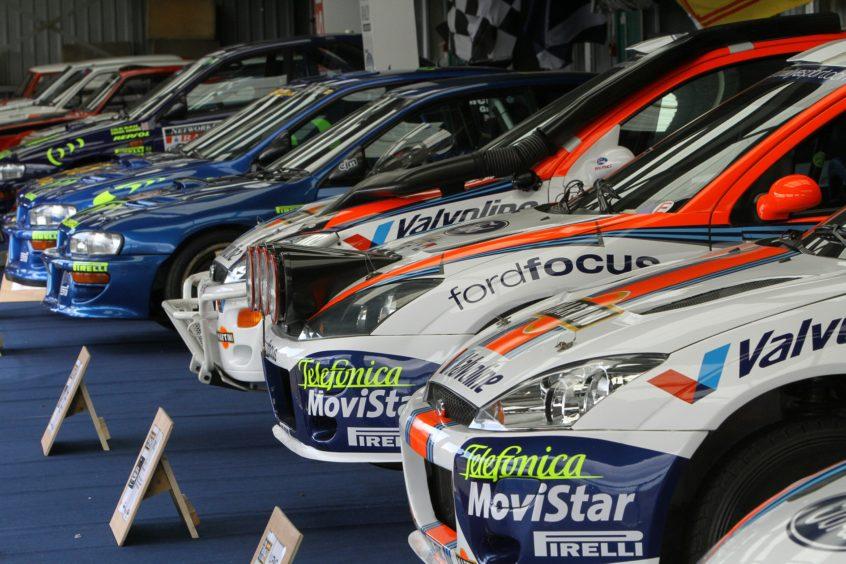
A line up of some of Colin McRae’s rally cars at Knockhill in 2015. © DC Thomson.
The weekend will see the second running of the invitational McRae Rally Challenge, last staged at Knockhill in 2015.
Colin’s father, five-time British champion Jimmy and the legend’s younger brother Alister, will return to the event and it has now emerged the star’s teenage nephew is hoping to complete the family line-up.
Max, the 15-year-old son of 1995 British champion Alister has won multiple karting titles in Australia, where the family have lived for a number of years and is pursuing a career in single seater racing cars.
But his dad told Autosport magazine the hope is for the rising star to compete alongside himself and his grandad at the Knockhill spectacle.
“Obviously we’re all looking forward to the McRae Rally Challenge,” said Alister.
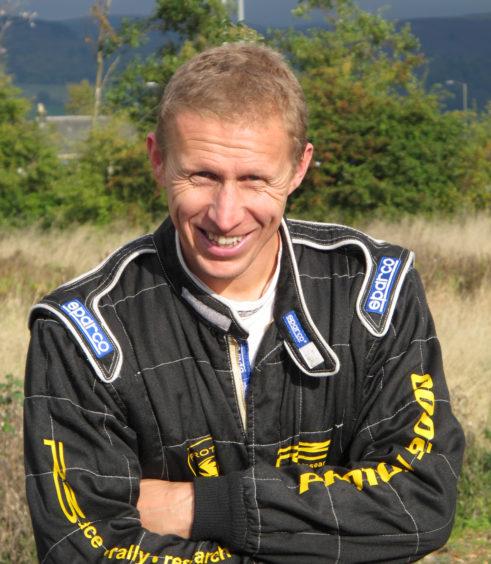
Alister McRae. © Supplied.
“Max’s gramps is very keen to have him there on the entry list. I think it would be great to have dad, me and Max on the same event. Max will be 16 by the time October comes, so we’ll have to see what’s possible, see if we can’t get him into a junior car. We don’t want him in anything quicker – we don’t want to give him the chance to embarrass his gramps,” he quipped.
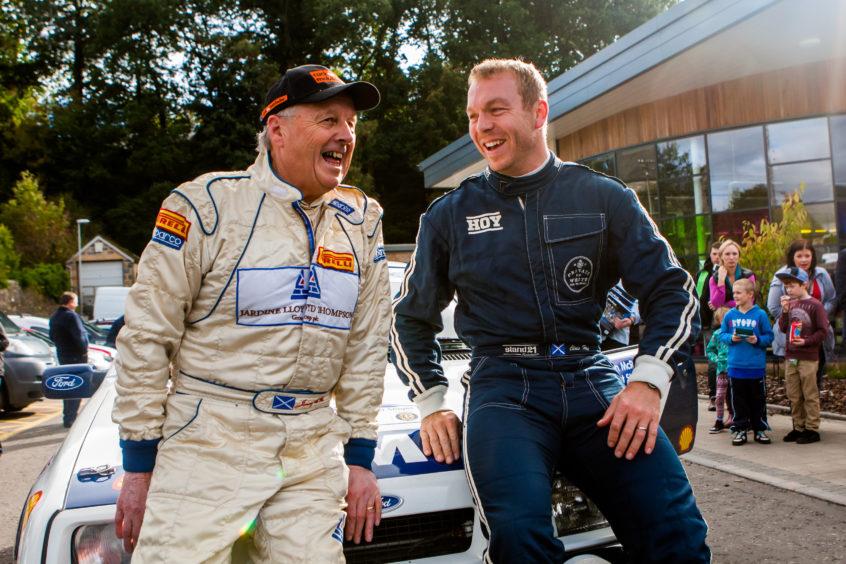
Jimmy McRae and Sir Chris Hoy at the McRae Forest Stages in 2015. © DC Thomson.
“I’m really excited about the season ahead and the chance to make the move out of karts and into racing cars.At the same time, rallying is so important for me. I had the chance to go to Wales to drive some of the cars my dad and Colin drove in their career, which was amazing,” said Max.
The Knockhill event of October 2 - 4 has already drawn major interest and will include static displays and rally action.
A Night of the Stars forum and 25th anniversary dinner will precede the main event, the highlight of which will be a parade of the rally cars Colin drove during his stellar career, including his 1995 World Championship-winning Subaru Impreza.
RallyLegend 2017 – A Tribute to Colin McRae. January 8, 2020. Article and photos by Trevor Wert (DirtFish), Director of Marketing.

Spanning four days each year, the Republic of San Marino plays host to an absolutely amazing spectacle that draws some of the most legendary and rare rally cars of all time. The event is called RallyLegend. From the historic Audi Sport Quattro S1 and Lancia Delta S4 rally cars to some of the latest World Rally Championship cars, they represent something special from every generation of the sport. To make the 15th running of this event even more special, the organizers dedicated this year’s race to the memory of the late Colin McRae, who was one of the greatest drivers to ever grace the sport.
With Colin’s “if in doubt, flat-out!” mentality, unbelievable skill behind the wheel and true showmanship, he was always a crowd favorite when he competed. It might be a bit lofty to say, but the sheer flat-out speed we see in WRC today is in part thanks to Colin. Pushing the limits of the cars and roads he drove, Colin also pressed his competitors to do the same.
Thanks to the tribute at RallyLegend 2017, on display for fans was one of the largest collection of cars that had been driven by Colin. The collection included Multiple Group A and Subaru WRC rally cars, a Ford Focus RS WRC in Safari Spec and a Citroen Xsara. There were McRae cars to see in nearly every direction.

DirtFish staff were in attendance thanks to the owner of DirtFish, Steve Rimmer. He is the fortunate owner of the 1991 Subaru Legacy RS Group A car that was driven by Colin at the 1992 Swedish Rally. Colin competed in the Subaru Legacy RS Group A car for his inaugural World Rally Championship Race and finished in second place. BGMsport Owner, Ian Gwynne, worked tirelessly with the RallyLegend organizers to coordinate transporting the car to the event. It was decided that the Legacy RS wouldn’t be there solely for display. Colin’s brother, Alister McRae would drive the car as course opening throughout the three-day event. If that wasn’t enough, the co-driver sitting in the passenger seat was someone who is very familiar with this car- Derek Ringer. Derek had been Colin’s co-driver during the Swedish Rally in 1992.
Also, in attendance to show their support for Colin and the McRae family were multiple World Rally Champions and current WRC drivers (thirty in total). Drivers included: Sebastian Loeb, Sebastian Ogier, Petter Solberg, Stig Blomqvist and a McRae prodigy by the name of Kris Meeke! Meeke was there to not only to make an appearance, he would also be competing behind the wheel of one of Colin’s Citroen WRC cars. It is one thing to watch a WRC race on TV, but it is something entirely different when seeing it in person. The unbelievable speed and commitment Meeke has on the road is out of this world and at times doesn’t even seem possible…

The event began with the introduction of the Subaru Legacy to Alister and Derek who had spent many hours and days with the car when Colin drove it. After being fitted in the car and learning their way around the controls, Alister and Derek set off for a full day of reconnaissance on the twelve special stages. The roads were mostly tarmac and extremely narrow, making them very different from roads used for stage rally in the United States. The stages wound through the farms, towns and olive orchards that dotted the landscape of the small republic. One of the stages even began in the ancient town square of the city of San Marino which was built atop a mountain. The eastern side of the mountain featured switchbacks which crossed back and forth up the mountain to a beautiful castle that had been built on the edge of a cliff.
The RallyLegend event is like no other in the world. It is a place where historic rally car owners are able to bring their collection and drive them as they had been in-period. What a sight and sound this was! The opportunity to see and hear some of the most legendary cars of all time such as the Audi Quattro S1, Lancia Delta S4 and 037, Fiat 131, multiple generations of Ford Escort and of course, ex-WRC Subaru’s at full speed on a rally stage is an experience you will never forget. Simply being in the presence of such greatness was truly an honor for DirtFish!
Being an American, you don’t truly understand how much of a legend Colin McRae was in his era. There wasn’t a single person who wasn’t drawn to his Legacy and his brother, Alister. When you see the number of people who stop and begin to applaud, you realize just how special Colin was.
Another amazing aspect of the race was the sheer love and excitement of the 80,000 fans that had shown up from all around Europe (and the world) to watch. The people are what make these types of events such a special occasion, at times camping on the side of the rally stages for days to stake their claim on a prime location to watch. During the day, you see friends gathered around tents and campers celebrating, people relaxing in lawn chairs and multiple different national flags waving along the sides of the stages. While there are definitely a few individuals that will jump out when their favorite cars are going past, the majority of the spectators are respectful of what is asked of them by the marshals and race control.
On Friday, the rally truly began! The first stages started in the middle of the beautiful medieval city and made their way down the mountain and into the countryside. Although it was difficult to see which cars were approaching in the dark, everyone could tell which car it was by the sounds alone. As soon as you began hearing the distinctive note of a Subaru Boxer engine in the distance, the fans would start whispering, “Alister” and “McRae”, with growing excitement as the loud roar moved closer and closer. Once the Legacy came into sight, there was an uproar from the crowd! They had Vuvuzelas, air horns and sirens. Many people had even modified 2-stroke chainsaws by removing the chain and mounting a funnel on the exhaust to amplify the noise. The older the chainsaw, the louder it was and boy did they make a racket!
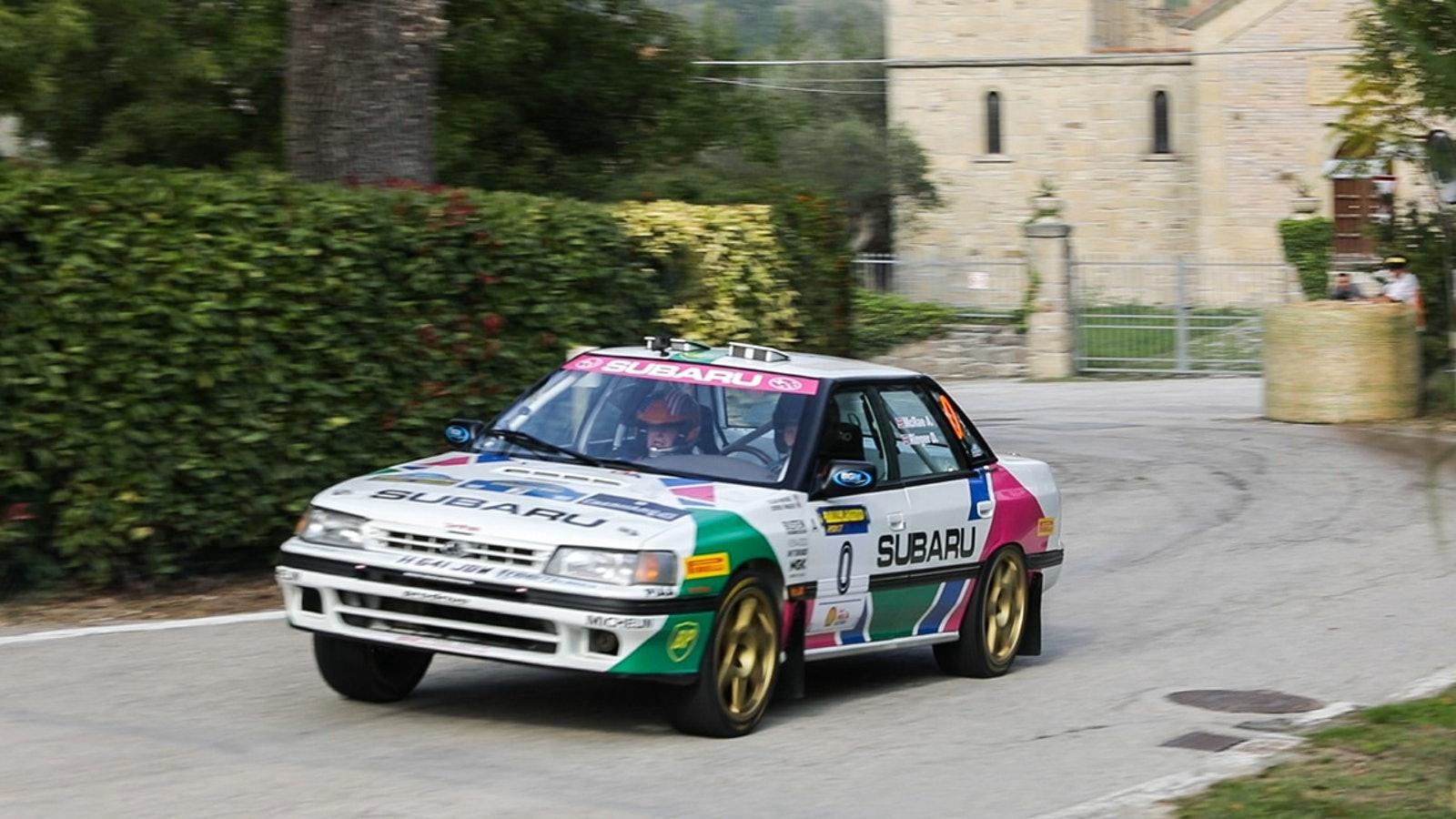
Although this was the first time that Alister had been behind the wheel of the Prodrive-built Legacy RS, he was able to flawlessly drive it as if he had campaigned an entire season in it. Had he and Derek been one of the actual competitive teams, they would have set some of the quickest stage times and been towards the top of the leaderboard. Either way, they were both so happy with the car and had nothing but praises for Steve Rimmer and BGMsport for how well the car performed.
Geared around the racing, Saturday consisted of a full day of stages that wound through narrow roads and small villages in the countryside. These roads allowed the drivers to open up the cars a bit more with longer straightaways and fewer steep mountain roads. There were even more fans lining the roads trying to catch a glimpse of ex-WRC Subaru, Ford, Toyota and Citroen rally cars as they would have been on stage throughout the generations. Following all of the Legends Cars were the actual competitive cars that consisted of a multitude of different makes, models and vintages (some that you aren’t even able to find in The United States). All of these magnificent cars were driven by exceptionally skilled drivers who pushed the limits of their cars around each corner. It was an extremely exciting bit of racing to watch.
Sunday was the final day of racing and the most special day of the entire event. The day was geared towards the fans and giving them easy access to a stage that the organizers had setup to run through an industrial park. Sunday had by far the largest amount of people in attendance of the three-day event. 80,000 fans had descended upon the small town (for reference, that is double the amount of people who live in the Republic of San Marino). There were only two stages of racing, but what made the day truly spectacular was the Legends Parade. During the parade, all thirty of the World Champions in attendance drove a parade lap through the stage in Colin’s honor. It is difficult to put into words just how special this was for the fans. Each driver would stop and put on a show, doing donuts and making all sorts of noise. Nothing topped when Alister passed by in the Legacy doing donuts and putting on a show as a Scottish flag waved from the passenger window. However, it wasn’t Derek Ringer in the passenger seat this time around… it was Colin’s daughter, Hollie McRae. People cheered and literally stared in amazement. I’m sure some people even fought back tears. It was a beautiful sight to see and something that may never be seen again.
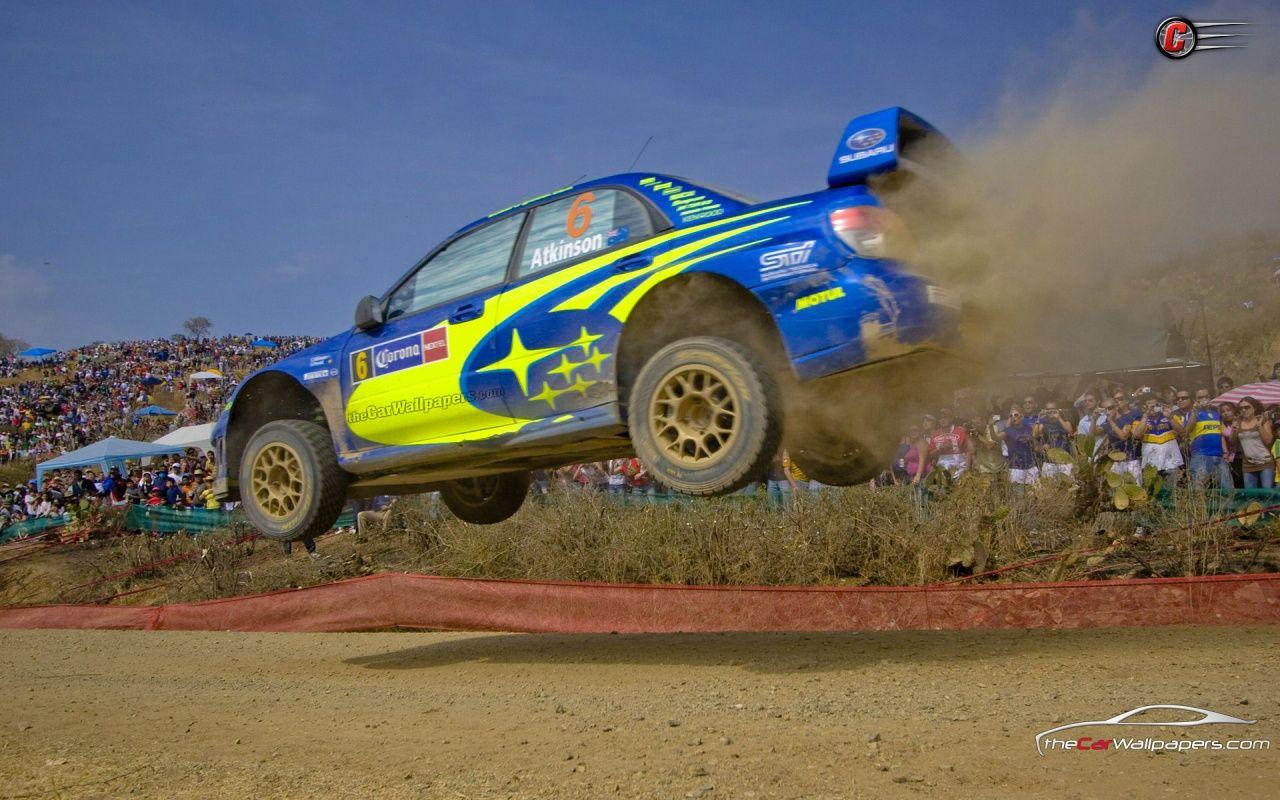
The Scot was an extraordinary talent, so much so that he had been nicknamed "McCrash" and the various video games that bore his name testify that he was a real legend.
Unfortunately Colin, who had been through everything behind the wheel, tragically disappeared in a helicopter.
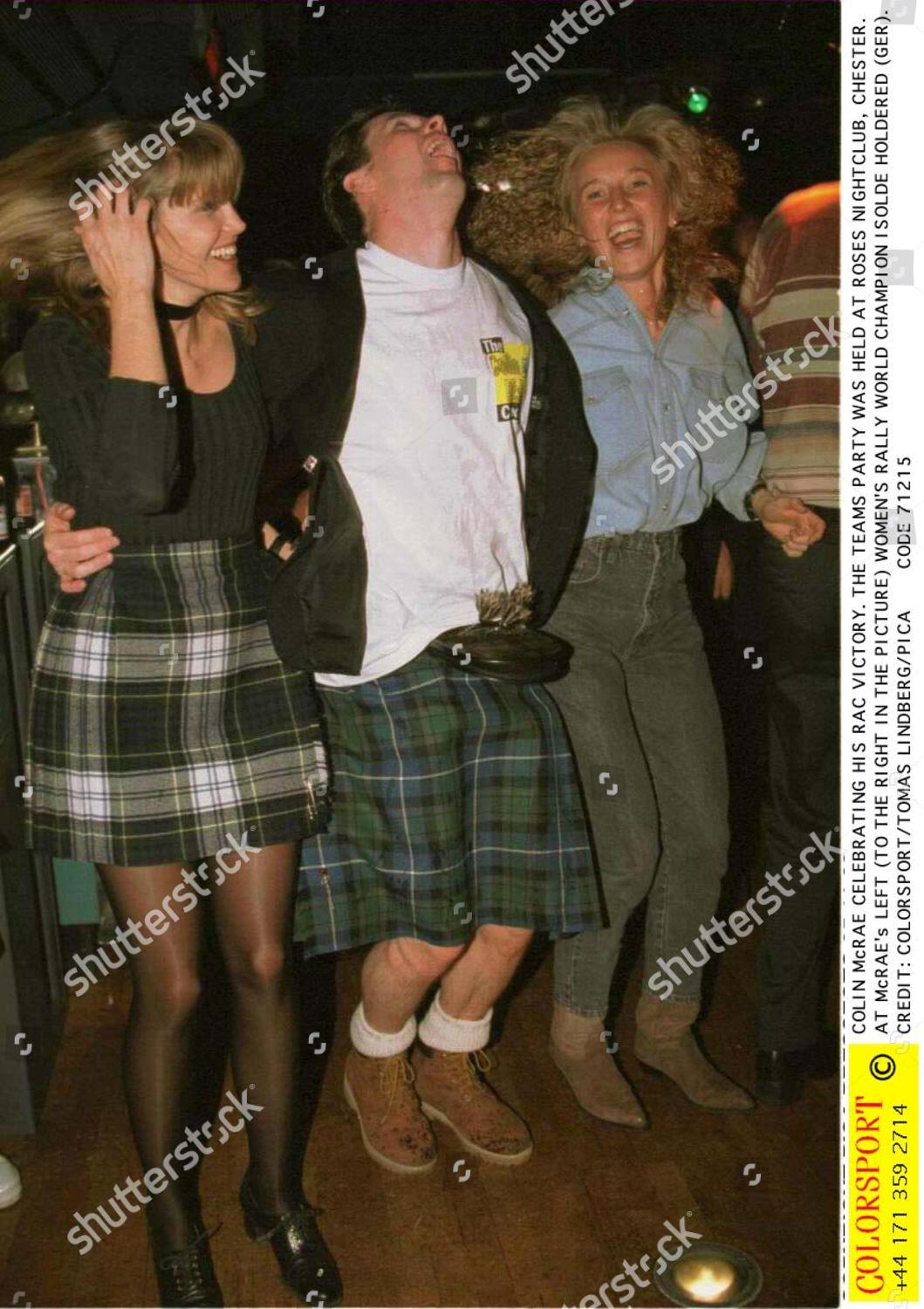
Inevitably, due to his extroverted character, McRae left his Citroën Racing collaborators with the memory of a generous man and of great feelings and also contributed decisively to the career of his compatriot Kris Meeke.

“As a child I was a huge fan of his, Meeke remembers. At 16 I saved money to go to see him racing in the Catalonia rally. Later I started working at the M-Sport study center, but my dream was to drive and I managed to achieve it by winning a race between young drivers. My first season was not very happy, but Colin had noticed me and took me under his wing. He helped me to improve and then move on to the FIA Junior Wrc. Still today he is definitely the person to whom I owe the most."

At the Rallylegend, Kris Meeke will pay tribute to his pygmalion by driving his Citroën Xsara Wrc and will pair with his "forerunner" Derek Brannigan: "beyond the emotional aspect, it is always a pleasure to drive this car, Brannigan added. It is from 2003, but is still incredibly stable and efficient. My goal will be to entertain the crowd that came to remember Colin."
Witnessing Colin’s family accompanied by so many legendary drivers who were there to show their love for the true rally legend during this parade lap was amazing. It was an unbelievably touching end to an event that was a tribute to arguably one of the greatest drivers to ever grace the sport of rally. Thank you for the memory of one man and his achievements.
Here's McRae's diary from when he tackled Le Mans 2004. Words: Jeremy Hart. Images: Lee Brimble.

Despite Colin McRae’s God-like standing in global motorsport, the opposition gathered on La Sarthe track at Le Mans might have been a little nervous of coming face to face with the kilted one in the dead of night out on the Mulsanne Straight at over 200mph.
Even if his last competitive passing manoeuvre took place way back in 2002 midway across the Masai Mara. His first excursion into the world of Le Mans was to be at the wheel of a Prodrive Ferrari 550 race car in the GTS class, alongside established drivers Rickard Rydell and Darren Turner.
And there were plenty of the predictable pit-lane jokes flying about before McRae made his first appearance at the famous French track.
“I’m sure he’ll get bored and find some gravel or grass to drive on,” joked one British racer before the start of the 72nd 24 Heures du Mans and the start of McRae’s career as an international circuit racing driver.
Ex-rally driver and Le Mans legend Henri Pescarolo reckoned this cynic had it all wrong. He has seen the Flying Scotsman in action and believes he’ll set La Sarthe alight.
“Colin is clever and to see him here is great,” Henri whispers to me: “it’s like the old times when drivers did rally, F1, Le Mans. The lot. And well.”
True, McRae is about the only driver on the planet to get one wheel on the grass at Silverstone’s Woodcote corner in an F1 car, giving it full opposite lock and keeping the 800 horsepower on. However, make no mistake, McRae is no hooligan. Since Jim Clark, there has been no more complete racer to come out of Britain. Give him any car, any surface and he will have them tamed in seconds.
That’s why we had to be there with him as he broke his Le Mans cherry. Here’s his diary detailing how his race panned out…
14.00: Tuesday, June 8. Preparing for the race.
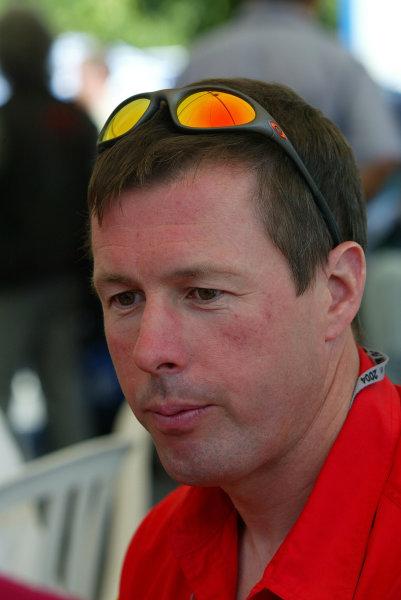
It is the Tuesday before Le Mans. McRae has just arrived from Scotland, having flown down in his own helicopter. “What I make from this weekend will barely pay for the fuel,” shrugs the out-of-work 1995 World Rally champ. “But I’m not here for the money. Le Mans is one of the great races of the world. With no WRC, I wanted to do a few of these different things this year, like the Dakar. It’s one race that every driver would love to have a go at.”
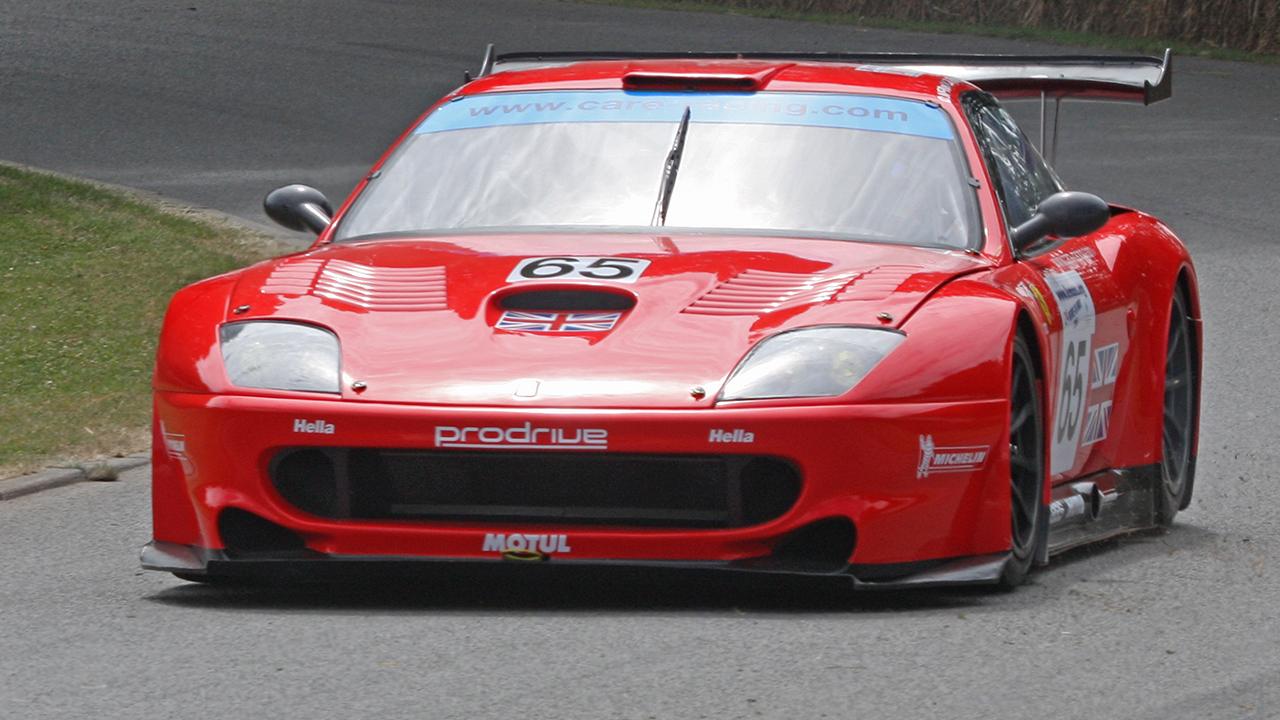
Sitting in the pits is McRae’s Italian stallion, 600bhp and 210mph worth of Ferrari 550. He describes it as “extreme”. Which for any normal mortal means it’s hellishly frightening. It used to be a road-going 550. Since then it has been stripped down to a carcass and rebuilt as a GTS class racer for the Care Racing Team, run by Prodrive - the same Prodrive which ran Colin’s World Rally Championship-winning Subaru.
Even his engineer, David Wilcock, is an old rally veteran. The omens are good. “What I am after is a class win. It is possible, although it won’t be a walk in the park,” he warns as he swaggers out the back of the pits towards another Ferrari which, given a brain, would have scarpered long ago at the prospect of being manhandled by the donut king of rallying.
It is a Ferrari 575 Maranello, the closest modern variant of McRae’s race car. With less than a week of testing under his belt and only a couple of days of that round Le Mans itself, Colin is desperate to get any extra mileage he can round the track on which the 24-hour race will be run.
The 575 is not quite a race car, but it is as close as he will get until race day, so he grabs the chance to drive it round the circuit with both hands. Except that once behind the wheel, he immediately has hand trouble. Selecting, or deselecting, the right mix of traction control devices proves problematic. The paddle shift is proving a bit tricky too, as we cruise round to the top of the Mulsanne straight.
Clearly he is too used to his Murcielago. All leather and suede and CD and climate controls, the 575 would be absolutely perfect for a 24-hour drive. The 550 race car’s only luxury is a mobile phone, for use if the radio goes down. The rest is hard and black and utilitarian and tight – it’s as mean-looking as a cell at Alcatraz.
So Colin enjoys his last minutes of freedom and luxury wrapped in leather and cooled by icy air. Never mind that the 575 is about to get the workout of its short life. The Mulsanne is so arrow-straight you half expect to see a few Roman centurions driving a chariot down it.
The lure of the most famous straight piece of tarmac in racing, long enough on which to land a B52 bomber, focuses McRae’s mind. He buries the accelerator somewhere out near the front bumper and starts playing tunes on the paddleshifters like Elton John tinkling the ivories. The Bridgestones behind our backsides wail like banshees in the fight between grip and grimace. We blast into the world where McRae excels…
10.00: Saturday, June 12. The wait is over. Le Mans beckons.
Eighty-four hours have passed since McRae’s first taste of Le Mans, that’s the same as three-and-a-half Le Mans ago. The last half-week has dragged on inexorably. There have been two practice sessions, including one at night. But most of the time McRae has spent kicking his heels, even kicking a football round his chateau hotel grounds with his teammates. I’d no idea McRae could even play football. But now he’s getting agitated. This is his day of reckoning…
“I got in at about 9.30am, which seems very early for a 4pm race start, but the traffic would have been even worse if we left it any later. I have been trying to relax a bit before all the start procedures, but there’s not much time before we’re called for duty.” At about 2pm, McRae joins the parade lap, being presented to the crowd on the back of a road car. The number of Union Jacks fluttering makes the grandstands look more like the last night of the Proms than a race in France. “There’s must be at least 200,000 fans here. All round the track there’s loads of cheering. It’s amazing.”
16.00: Saturday, June 12. Tensions build for the start.
The plan is to let the established racers - Rydell and Turner - kick things off with a two-hour stint each. There’s a brief adrenalin rush as McRae watches the start of the most famous sports car race in the world and only the fifth circuit race he’ll have entered, from the pit wall.
“I’m not going to be driving until about 7.30pm, so after the start I’ll be trying to get a bit of rest, then I’ll get myself a massage and something to eat.”
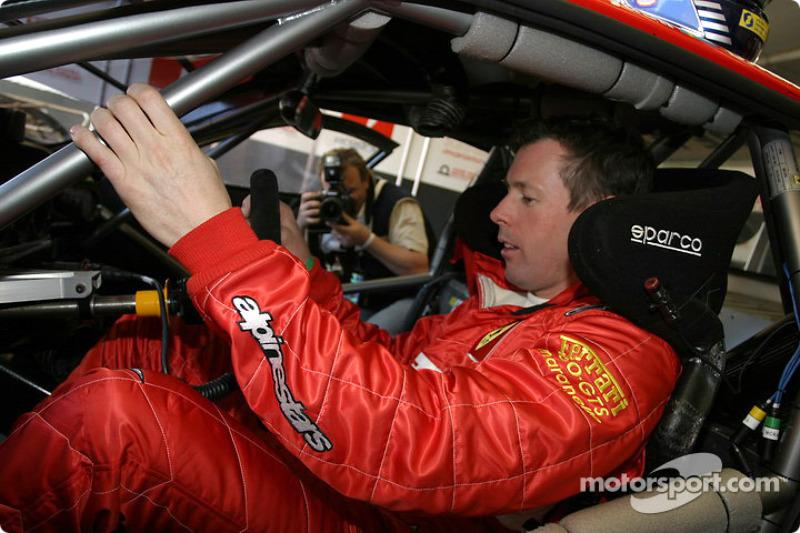
Colin is keen. He gets his racing suit on and sits on the pit wall, listening to the radio. Rydell is in the car. In just two more laps, it will be McRae’s turn to take over. His helmet looks as if it is about to explode with expectation.
“Darren made a great start to get ahead of the Corvettes, but unfortunately their pit stop was a bit quicker than ours so they’re leading the GTS class. We’re still very much in touch, though.”
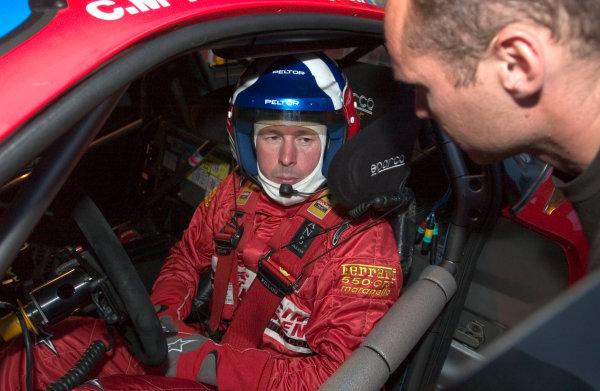
With that, McRae is set like a sprinter waiting for the start gun. The bug-splattered red Ferrari lumbers down the pit lane. Its brakes, its tyres, its ducts, in fact just about everything on the car disseminates heat. Through the haze, Rydell erupts. He is barely clear of the car as McRae slides himself into the hot seat, buckles up and waits for the refuel to finish.
19.20: Saturday, June 12. A Le Mans virgin no more.
Disaster. McRae is on the radio. He’s spun at Mulsanne Corner. And worse, he’s torched the clutch. He is coming back to the pits. Faces in the Ferrari garage are as long as the Mulsanne Straight. But not nearly as long as McRae’s.
“I moved over on the track for a prototype on the Mulsanne corner, got onto the marbles and the car started spinning - just a small spin. I tried to catch it, recover and carry on, but you either need to do it gently or very aggressively. I was somewhere in between, which is not good and the clutch started slipping. I feel bad for Darren and Rickard. We’ve lost eight laps.”
20.00: Saturday, June 12. Unhappy daze for McRae.
Colin is buzzing so much he cannot sleep. His first stint has been exhilarating. But not in a good way. He is in no mood to doze. McRae talks me round the track which has so nearly taken him prisoner. We start at the top of that famous and furious Mulsanne straight…
“I’m flat out (past the Hunaudieres bar). There’s people and lights all down the Mulsanne. But I’m looking for the cottages, which is the braking spot for the first chicane. These things brake a lot better than you expect and the barriers are not very high given how fast you are going. That’s a good reason to keep it on the track.
There is no time for relaxation, even on the straights. I’ve been on the edge.”
“Mulsanne is fast, but Indianapolis and Porsche Curves are fast and technical. That’s where Mark Webber went flying a few years ago. No barrier is going to save you when that happens. If you overcook it there, you are off in a big way. There is no such thing as a small accident at 200mph.”
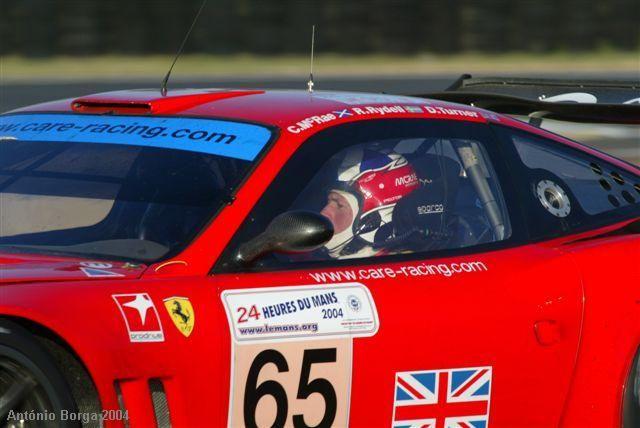
McRae has fallen foul of the one thing that concerned him prior to the race, traffic. He’s even had a bit of advice on the subject from Johnny Herbert. “In our GTS class, we will be passed and do a lot of passing. Johnny’s advice is to hold your line - and it is up to them to get past you. Especially at night.”
Rydell is doing a double stint until midnight. Then McRae is back in the firing line. He will have to do a triple stint, which means almost three hours of relentless driving - and at a time when the body is at its lowest ebb. He’s eaten pasta and other long-burn foods. He should be fully charged, but three hours in a Le Mans car is like playing three hours of football in a sweat chamber.
“I have no worries about falling asleep. The adrenalin pumps far too hard for that. But the doctor has given me a caffeine pill anyway. Now I am wired.”
01:00: Sunday, June 13. Not scared of the dark.
McRae is back out. He is determined to show he has what it takes for Le Mans. Rydell has made up some time and soon McRae gets into a good rhythm himself. The main opposition is the Corvette team. In the dead of night, Colin comes across one of their cars all on its own. It is in his sights. He decides to engage.
“I know this is a 24-hour race, but it is still a race. I got past him and held him off for an hour. It was so exhilarating, racing in amongst all the traffic too.”
After an hour of combat, the Corvette gets one over on McRae and the dogfight ends. McRae is pleased. Until he trips up again. He out-brakes himself into a corner and spins the Ferrari once again. The tyres have been going off and he finds himself having to brake earlier and earlier. Then he races up so close behind a slower car, he thinks he’s going to ram it. So he yanks on the anchors so hard that he loses control.
“Things happen a lot faster at night,” he explains. But the only damage that’s been done this time is to his pride. It is not the only `moment’ of the stint. His whole race is like driving in the centre lane of the motorway without being allowed to change lane, constantly judging the right speed to pass and be passed without colliding. One time that equation comes perilously close to disaster.
“At the end of the pit straight, I came across a prototype and a slower car busy looking at each other. I had a split second to decide whether to go for the gap. Just as I did, it started to close. I thought: ‘I’m not going to make it’. But I did.”
04:00: Sunday, June 14. McRae’s nighttime shift is over.
McRae has been to hell and back. He’s shattered. He has not slept for 22 hours. He has just driven at 200mph for four of the last seven hours.
“It rates as one of the hardest things I’ve ever done in a car - and the most uncomfortable! I am a bit taller than the other two, so my driving position means my legs are at such an angle that I’ve got serious lower backache.”
Sleep is not an option. McRae needs intensive physiotherapy. There is even a concern he might not be able to continue. But the physio works his magic on the Scot’s bruised, hurting body. The massage also brings some much-needed relaxation to the rally man. The concentration needed over the last few hours has been intense and he needs to be able to let go for a while.
05:00: Sunday, June 14. Into the arms of Morpheus.
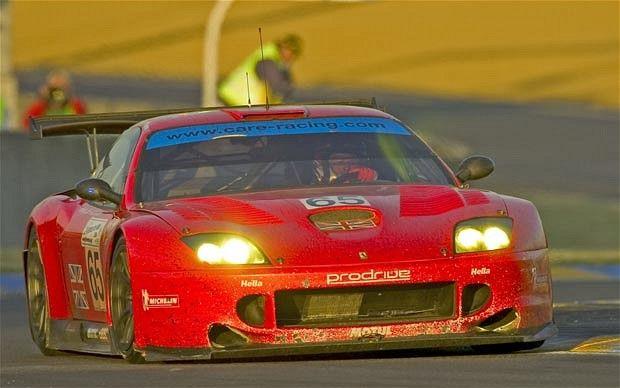
“Because this is not my normal discipline, I need to focus even harder than the racing drivers. There is no time for relaxation, even on the straights. I have been on the edge and watching out for the car trying to slide.”
McRae’s priority now is some shut-eye. His next stint is not until breakfast time.
“I’ve had a snack and shower. Now it’s time for some sleep. We have a Portakabin, but it’s not really insulated and the noise from the track and pits never subsides. “I try to sleep, but mostly it’s dozing. I think constantly about the race and what I could have done better. I am pleased with my times, but cross about the two spins.”
McRae gets a couple of hours of fitful sleep. Not much, as there’s still nearly 12 hours to go. It is not going well out on the track. Car 65 continues to have gearbox troubles which cause a long stop in the pits, but rule number one in endurance racing is you never give up. The ‘box is fixed and by the time McRae is woken from his slumber things are looking up.
“It doesn’t seem like any time at all between when I stopped the last time and being woken up to go back to the pits again.”
McRae’s body is refuelled with a light breakfast. But he is not worried about energy. His legs are still in agony after his cramped nighttime stint. With seconds to go before his dawn raid, he requests painkillers.
Some doubts still exist whether the iron man of rallying has what it takes to finish this race from hell. McRae put in a time of 3:54:08 in this session, not far off Darren Turner’s race best: a GTS-class lap record of 3:52:22. So he has the speed, but does he have the stamina?
07:00: Sunday, June 14. Vital lessons learned.
“The painkillers worked a treat. I’d have hated to let the team down at such a crucial stage.” Crucial is an understatement. McRae is still some way behind the class leader, the Ferrari’s sister car 66, but they have all sorts of mechanical dramas and McRae finds himself driving a car which is now third in its class.
McRae has learned one important lesson in the last 16 hours and that is not to risk anything when the race is only at two-thirds distance. He opts to avoid the other cars on the track, keeping himself to himself and minimising the chance of another `moment’. It makes for some long hours in the driving seat.
“You find yourself thinking about all sorts of things. Mainly to do with the race, but also family and stuff. Never for very long, mind. The corners and the chicanes make you concentrate all too regularly.”
Worried about his legs, which are still causing him pain, the team make sure McRae’s morning stint is a short one.
10:00: Sunday, June 14. Perchance to sleep.
McRae is back in the pits. He tries to snatch a few more refreshing zeds, but can’t. He finds breakfast and a shower a nice alternative. Relaxed, he even manages to call home.
“Alison, my wife, was no more worried about me doing this than any other event, but it is new, so that makes it a bit different.”
12:00: Sunday, June 14. McRae’s farewell blast.
The Scotsman blasts out of the pits with more confidence than ever. He’s getting used to this game by now, but is all too aware that Le Mans can have a vicious bite.
He puts in some good lap times, determined to preserve the team’s third in class and ninth place overall. He savours the last few laps of Le Sarthe, enjoying this new experience at last, before the call to come in for the last time echoes over the radio.
“I felt a real sense of anti-climax when they called me to come in, that’s for sure,” he says.
16:00: Sunday, June 14. The end is nigh, for now…
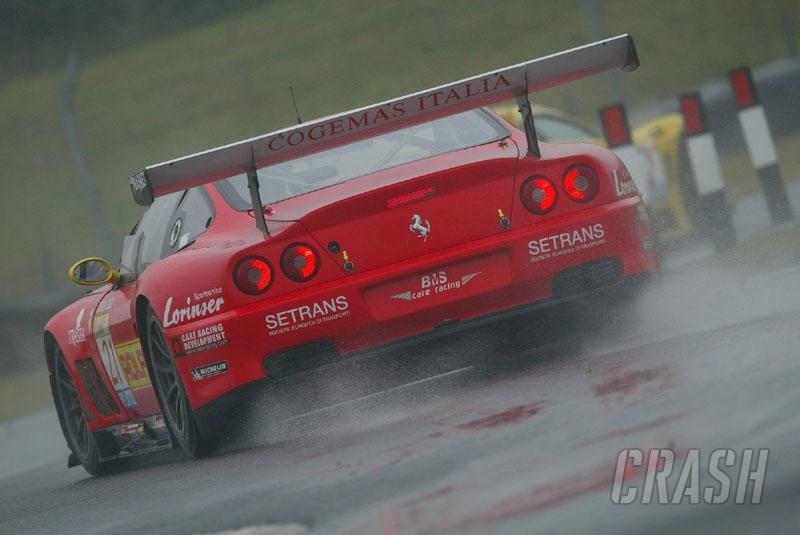
“All sense of tiredness and pain go for a while,” says McRae. “Darren and I were on the pit wall at 4pm to see Rickard cross the finish line - a podium finish is good, considering all the problems we had. Just to finish this marathon race feels like a victory in itself.”
The hour after the race is lost in a haze of celebration and commiseration. The result is a good one, but the Corvettes have stolen the Prodrive team’s GTS class trophy.
With the emotions draining from Colin’s body, the pain and the fatigue rise to the surface. It takes McRae a week to recover from his first 24 hours of Le Mans. The obvious question is: would he do it again?
“This kind of thing could get addictive. Driving a rally car is more fun, but this is Le Mans. Would I have another go? I reckon so.”
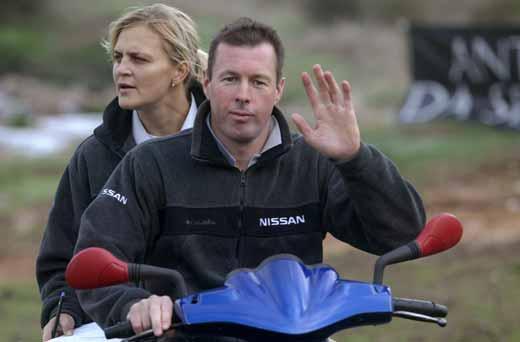
Can you die for fun? No, maybe not, not even Colin McRae.
Videos
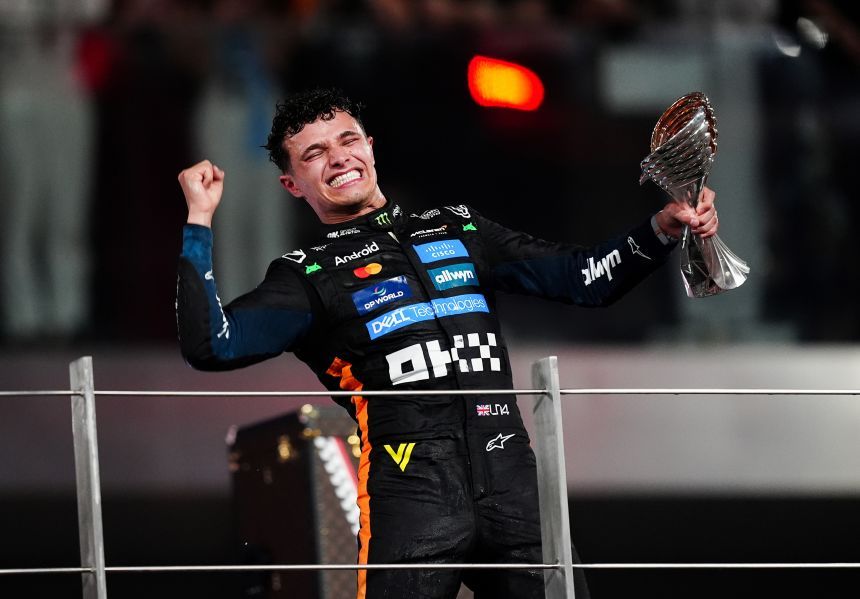

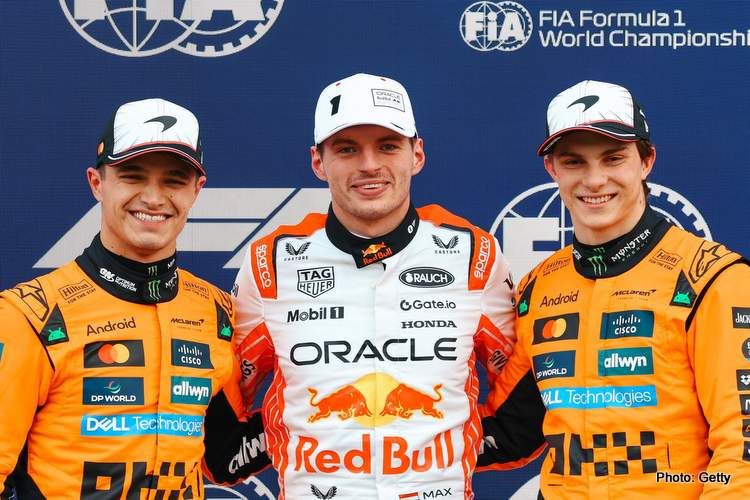
Comments
Authorize to comment